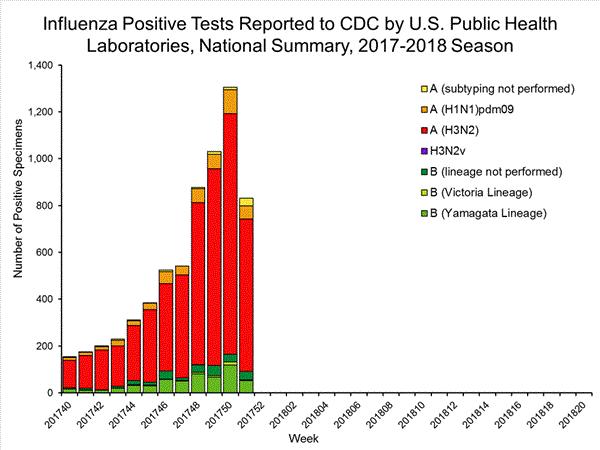Flu season is ramping up and the cases that have already occurred are being used to make predictions on what will be coming down the pike when it peaks in a month or two.
So far this flu season, influenza A (H3N2) viruses have been predominant in the United States (represented by the red bars in the graph below.) This information interests health officials as this particular strain is more concerning than others. Previous flu seasons when H3N2 led the pack were more severe, especially among young children and older adults. Between the years 2003 to 2013, the three flu seasons that were dominated by H3N2 strains of the flu had the highest mortality rates.
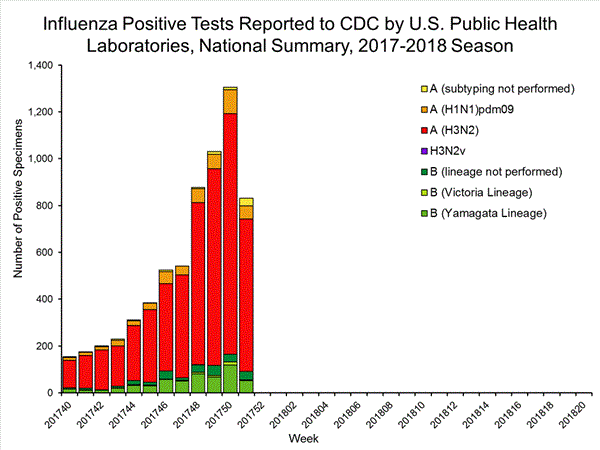
What does the name H3N2 mean? There are many different flu strains and one place that they differ is in two major proteins on the outside of the virus - the Hemagglutinin (H) and Neuraminidase (N). For more on this, please read here.
This news is most concerning to those affected by H3N2 which, according to the graph below, has been older people (shown in light purple.) The numbers of positive tests for H3N2 are shown on the fourth bar down and show that the group with the largest number of cases are in people greater than 64 years old (over 35%.)
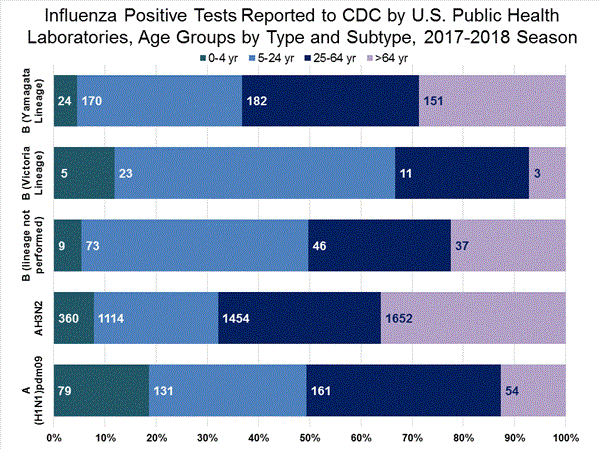
What should we expect in the next few months, then? Looking at the trends from the past few years, there is reason to be concerned. The graph below shows the number of visits for influenza-like illness (not confirmed cases) for the last few years. The bold, red line below shows the numbers for the current season - riding along the path of the early spiking 2014-2015 season. Only time will tell where the number of cases will take us from here, but, we're off to a very foreboding start.
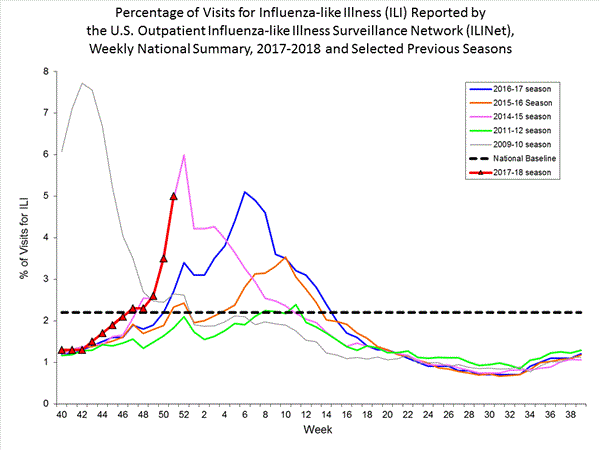
Other data shows that the southern region of the United States is reporting more flu-like activity so far. This may be because they are seeing more of it, but, it also could be simply that they are reporting more of it.
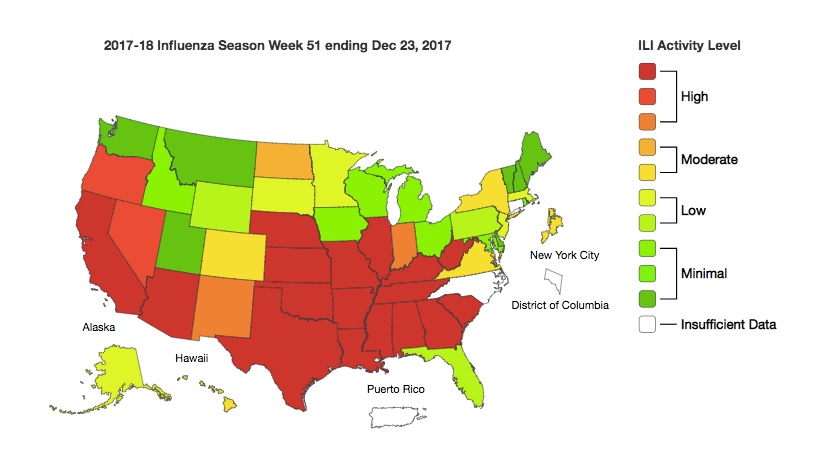
Lastly, there are the heartbreaking stories emerging on social media of children who are dying from the flu. The CDC reports that the majority of children who die from the flu are not vaccinated. Even though the vaccine is not perfect, and is not a guarantee against all flu-like illnesses, it will offer protection and it will lessen the course of the disease, even if you or your child contract influenza. And, it is not too late! It takes about two weeks for your body to build up immunity the virus after vaccination. To learn when is the best time to get a flu shot, read here. Being protected come mid-January is important as that is when cases tend to increase. We will keep the updates coming here at ACSH, but, in the meantime, please take another look at these graphs, realize that this looks like its going to be a rough flu season, and protect yourself and your children.
Source: https://www.cdc.gov/flu/weekly/
